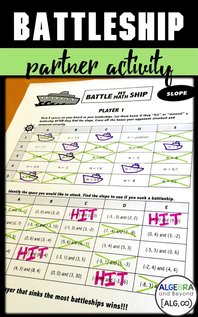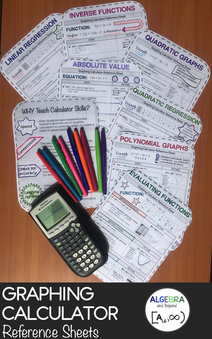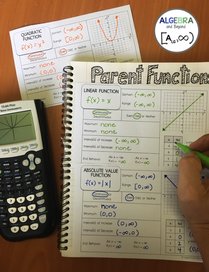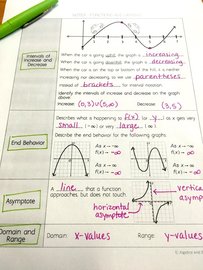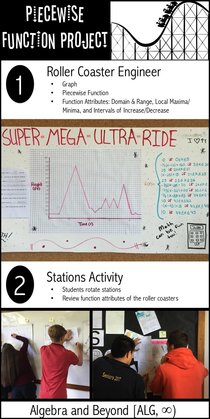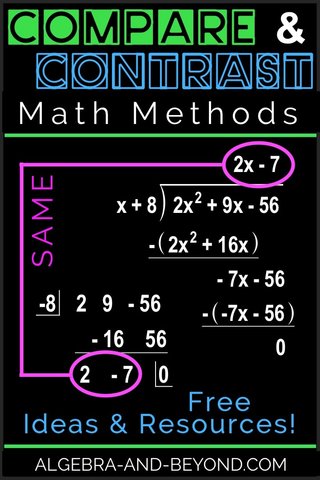 
Check Your Work!
I am a big advocate for students always being able to confirm (or disaffirm) their solutions. I constantly remind my students to CHECK their work, whether that means plugging a solution back into the equation or checking on the calculator. And if you’ve read this post, you know I show my students many ways to use the calculator to find solutions. But whatever the method, JUST DO IT and then you will KNOW if you got the correct answer, especially for assessments. If students check their work, it’s impossible for them to get the solution wrong. So, of course my students earn 100% on all their assessments right? Nope. They don’t want to check their work; they just don’t want to do it. Maybe you are thinking, why don’t I just add a “check your work” section to each problem on the assessment? Yes I could do that, but then they would have to do it algebraically, and I don’t want to force them to use that method when they can easily check on the calculator as well. Luckily I figured out another way. It won’t work for every math topic, but it’s super helpful for topics when several methods can be used. It all started with dividing polynomials using synthetic and long division. Every year my students loathed long division and it showed on assessments. How could I give them the confidence to know they are doing the long division properly or at least figure out a way to get the correct solution? It’s actually really simple. Instead of stating “do these four problems using synthetic division and these four problems using long division”, I changed it up and said do these four problems using both methods. I am able to see if they understand both methods AND they are checking their answers! Compare and Contrast What happens if the answers don’t match? This will make it obvious to students that they did something wrong, so they naturally will try to find the mistake and correct it. It pushes them to critically think about their process and how to correct it. Essentially, students are comparing and contrasting the two methods to ensure they get the same result. If they don’t completely understand long division, they can still figure it out by working backwards, if necessary. We know that similarities and differences is one of Marzano’s highly effective instructional strategies. Here is a brief reminder of what this strategy does for our students (detailed list here):
Quiz Time
I have been using this quiz for several years now, and time after time, 80-100% of the students earn an A on it. And no they’re not honors Algebra II classes. In fact, this years’ class included 9th-12th graders with all different skill levels and 18/21 of them earned an A! I get so excited to give this quiz because I know most students will do well since they are checking their answers.
If you use this strategy, it is important to remember to check the process for each method because some students can easily write the same answer for both, but have the incorrect steps. And of course, there is the division of a polynomial by a trinomial where you can only use long division. I do add a part to that question stating they need to check their answer, but didn’t tell them how to do it. I assumed they would multiply the quotient by the divisor. I was very surprised to see several students used other ways, such as dividing the dividend by the quotient using long division or synthetic division. Neat stuff!
Click on the photo above for the free editable quiz.
Practice Activity
Here is a fun partner activity to use as practice before the quiz. Students work on one problem, each using a different method and then confirm their answers with each other. Students alternate methods from problem to problem. They find this challenging at first because it requires them to switch back and forth between methods, but it helps them thoroughly understand each method and retain it.
If you like this idea and want to try it in your classroom, click on the photo above for the free activity.
More Methods
There are several topics in math where you can use this strategy. Here are a few I can think of:
Here are more great activities that compare and contrast math methods:
3 Comments
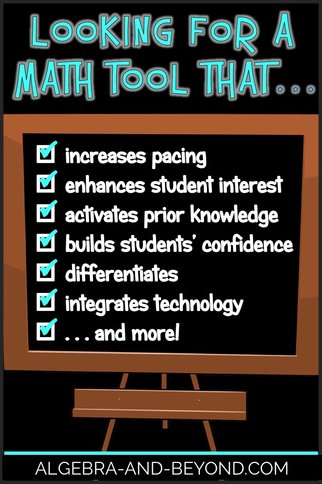 
Why use video warm-ups?
I explained in my previous post how I came up with the video warm-ups. Through this process, I discovered many ways in which these warm-ups benefited my students for both Algebra 2 and Calculus courses. Here are my top reasons: Purposeful Warm-Up: Not once had I ever used a warm-up in my classroom prior to using a video warm-up. I never understood their purpose. The ones I had seen contained similar questions that were on the homework. I was able to see each student’s level of understanding from their homework, so there was no need to ask them the same question again with different numbers. I wanted warm-ups or a “do now” to have a very specific purpose that was useful to me and my students. The purpose of the video warm-up was 1 – to see if they watched the video and 2 – to assess how much they learned from it, which then helped me get a general understanding of how easy or difficult this lesson was going to be for them. Since creating my video warm-ups, I have found other cool and unique warm-ups that are purposeful as well. Learn more about those warm-ups here. Increases Pacing: I was concerned about the Advanced Placement pacing for Calculus. We needed to get through a lot of content, in a short amount of time. I wasn’t going to have time to do 3 examples for each topic within a section AND allow time for group collaboration activities, projects, discussions, etc. I quickly realized that the video warm-ups gave the students that extra head start they needed in order for us to move quickly through the content in class and have more time for other types of learning strategies. Enhances Interest: Watching videos before a lesson enhanced students interest in the new content. Students came to class ready to learn, especially if it was a topic of interest to them or they found easy to understand based on the video. Activates Prior Knowledge: Often the video activated knowledge the students learned on the topic from a previous course. This helped them make better connections. Builds Students' Confidence: I’m going to take this right from one of the reviews I received from another teacher that used my warm-ups. “I just finished Chapter 2 and this tool was extremely helpful throughout the entire unit! My students really found that watching the videos prior to class helped them to better understand the material in class. They told me they felt more willing to participate in class as well! Calculus can be scary for students, but these videos and warm-ups can boost students' confidence when it comes to difficult material.” – Anonymous Differentiation: The videos allowed me to differentiate without even knowing it. Some of the videos offered enough information for a few students to come to class and start right in on the activity for the day or the homework with no need of any assistance. For the others, I still had the time to go through the notes and completely explain the content. And even for those that still needed a little extra help after the class period, I had that covered too. Which leads me to the next benefit… Review Tool: Students can go back and watch the videos at any time. I give them all the links in one document for each unit, so it’s very organized for them. Even if the video I selected didn’t quite cover everything, often the “up next” feature on YouTube suggests another video that will help them. This is also an amazing tool to use before final exams, as we all know students forget things. Now, you can direct them to watch the video again for help. Yes, of course, we can help them ourselves, but encouraging kids to take ownership over their own learning is very important as well and this tool is an easy way to do that. Integrates Technology: How many times a week do we scroll through our Facebook feed to stop and watch a video that someone posted? Well, for me, it’s more than I want to admit. Watching short videos is part of our daily lives now, so let’s bring it into our classroom in a constructive way. Modified Flipped Classroom: Research has shown that a flipped classroom has incredible results. I’m not quite ready to flip my whole class, maybe someday. For now, I enjoy the benefits and balance of the “modified” flipped classroom. These are the many advantages for using video warm-ups in your classroom. Wow, aren’t these great?! Maybe you are wondering where the statistical data is to support these benefits? I don’t have it. I’m a teacher just like you. We create resources for our classrooms in hopes that they will work well. I am excited to share that I found one that works for my students and me too. The hours (and hours) I spent (still spending) finding quality videos for my students is all worth it. Yes, it’s boring to do and I have fallen asleep at the computer a few times, but that’s because I don’t just use the first video I find on a topic. I search and search until I find one that fits the right time frame and covers just what I want it to for each lesson. All this, because I love the way my students learn using this method! In case you missed it. Here are the other posts on video warm-ups: Want to use video warm-ups in your classroom? Click below:
|
Hello there,
|
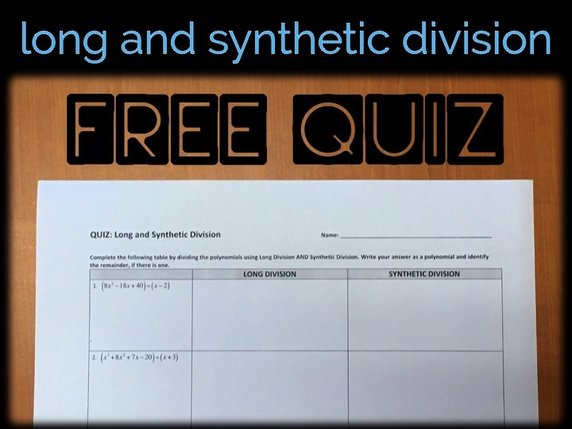
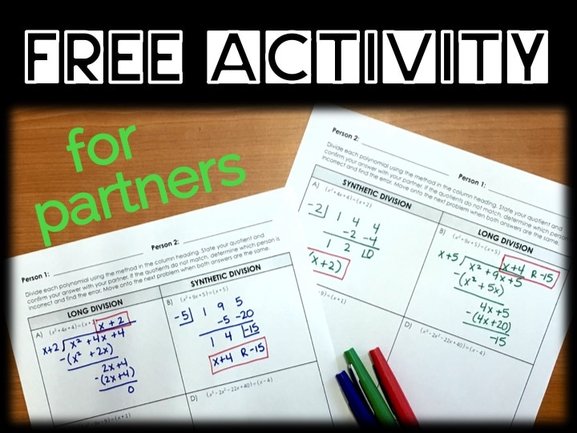
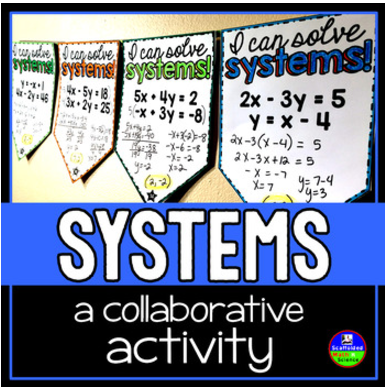
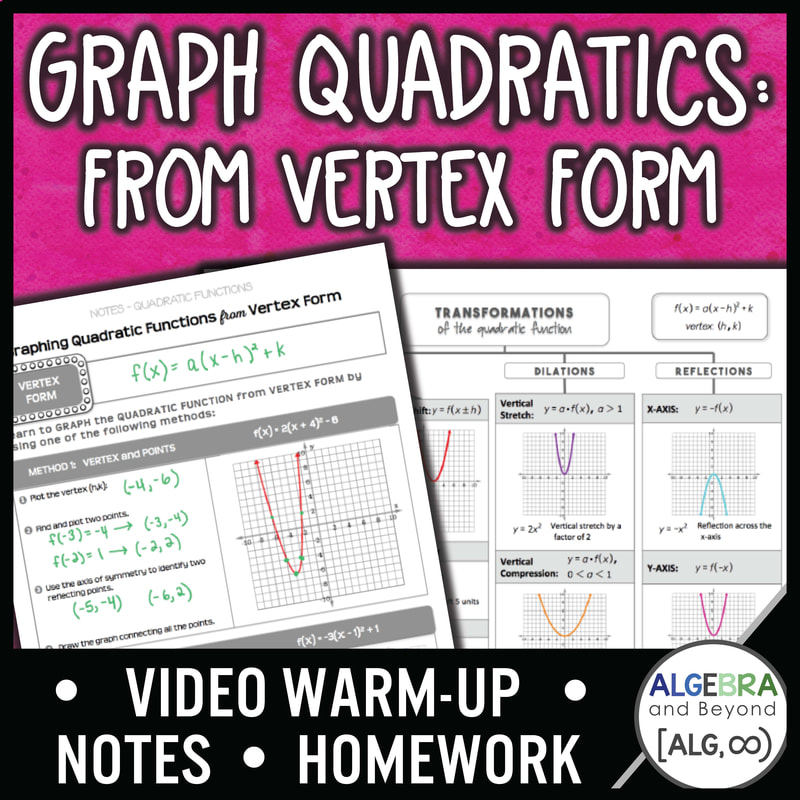
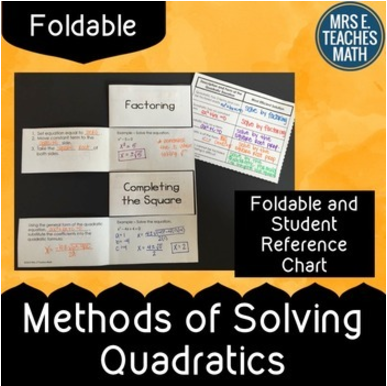
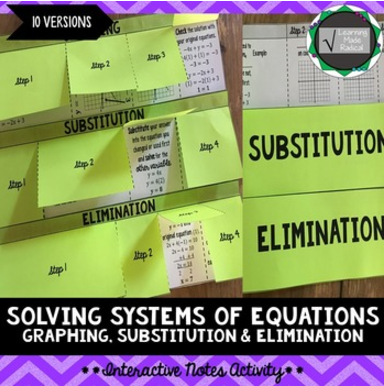
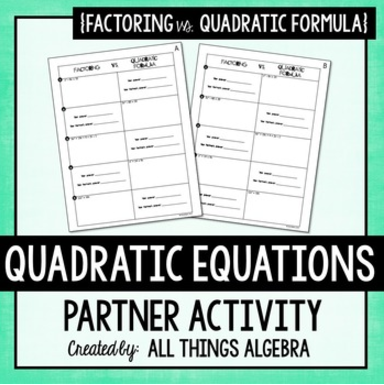
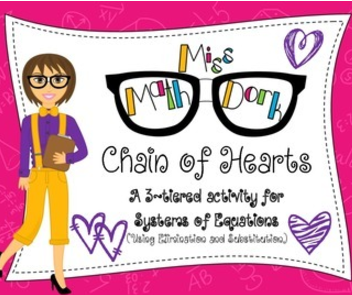
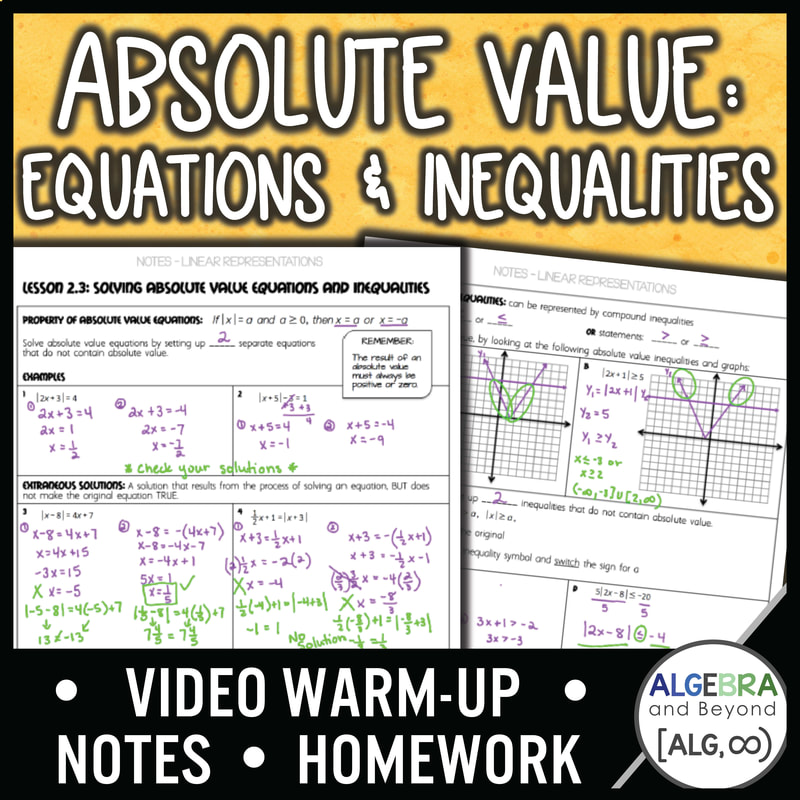
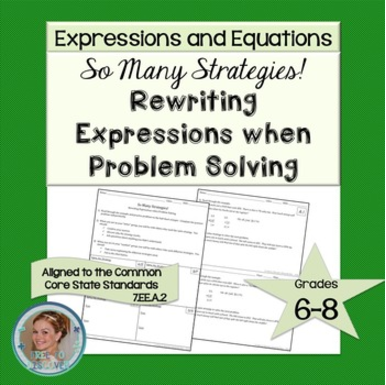
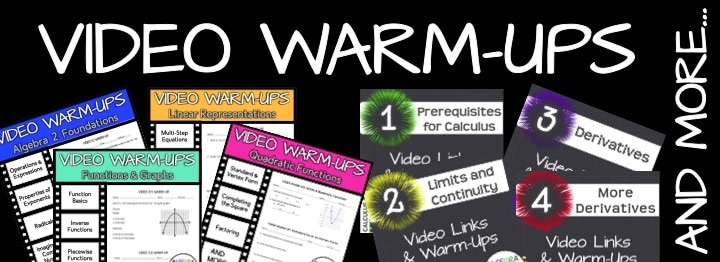





 RSS Feed
RSS Feed



